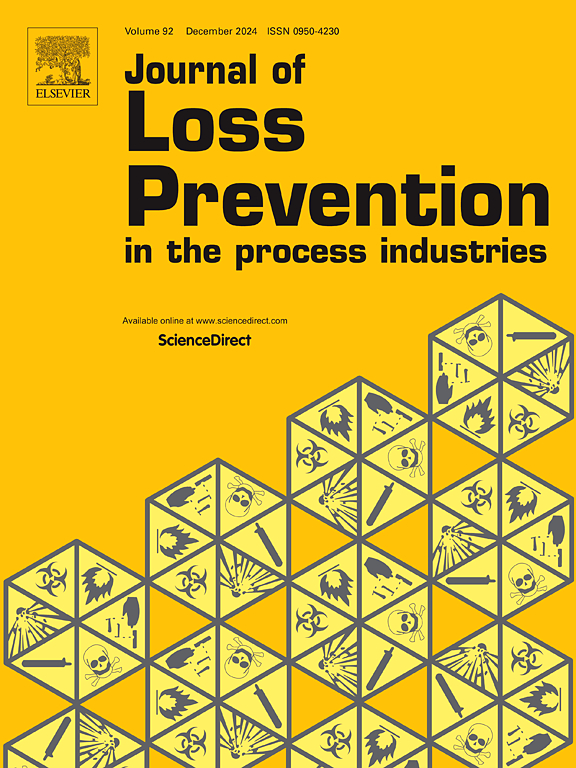三鑫金铜矿粉尘职业病危害定量评价
IF 4.2
3区 工程技术
Q2 ENGINEERING, CHEMICAL
Journal of Loss Prevention in The Process Industries
Pub Date : 2025-06-09
DOI:10.1016/j.jlp.2025.105705
引用次数: 0
摘要
职业性尘肺是严重威胁矿工健康的疾病。为了定量评价生产链中粉尘危害程度,基于USEPA(美国环境保护署)健康风险评价方法建立粉尘健康危害评价模型。引入伤残调整生命年(DALY)值,定量表达粉尘对工人的危害。通过计算不同工作面不同工种的健康风险和DALY值,确定了风钻井工人、运输工人、叉车司机和破碎岗位为粉尘危害的关键控制点。将健康危害评价模型与蒙特卡罗方法相结合,建立了概率危害量化模型,模拟了粉尘在不同工作面的危害分布,分析了暴露参数的敏感性。结果表明,该矿采矿车间粉尘危害最大,工人DALY值为1.15 × 10−1a。此外,粉尘浓度(C)、平均暴露时间(AT)、暴露持续时间(ED)和暴露频率(EF)对粉尘健康危害的影响最为显著。本文章由计算机程序翻译,如有差异,请以英文原文为准。
Quantitative evaluation of occupational hazards caused by dust in Sanxin Gold and Copper Mine
The occupational pneumoconiosis is a serious threat to the health of mine workers. In order to quantitatively evaluate the degree of dust hazards in the production chain, the dust health hazard evaluation model was established based on the USEPA (US Environmental Protection Agency) health risk evaluation method. The DALY (Disability Adjusted Life Year) value was introduced to quantitatively express the damage of dust to workers. By calculating the health risks and DALY values of different work types in different working faces, the key control points of dust hazards are identified as wind drilling workers, transportation workers, forklift drivers, and crushing positions. A probabilistic hazard quantification model was constructed by combining the health hazard evaluation model with Monte Carlo method to simulate the distribution of dust hazards at different working surfaces and analyze the sensitivity of exposure parameters. The results show that the mining workshop of this mine is exposed to the greatest dust hazard, with a worker DALY value of 1.15 × 10−1a. In addition, the dust concentration (C), average exposure time (AT), exposure duration (ED) and exposure frequency (EF) have the most significant effects on dust health hazards.
求助全文
通过发布文献求助,成功后即可免费获取论文全文。
去求助
来源期刊
CiteScore
7.20
自引率
14.30%
发文量
226
审稿时长
52 days
期刊介绍:
The broad scope of the journal is process safety. Process safety is defined as the prevention and mitigation of process-related injuries and damage arising from process incidents involving fire, explosion and toxic release. Such undesired events occur in the process industries during the use, storage, manufacture, handling, and transportation of highly hazardous chemicals.

 求助内容:
求助内容: 应助结果提醒方式:
应助结果提醒方式:


